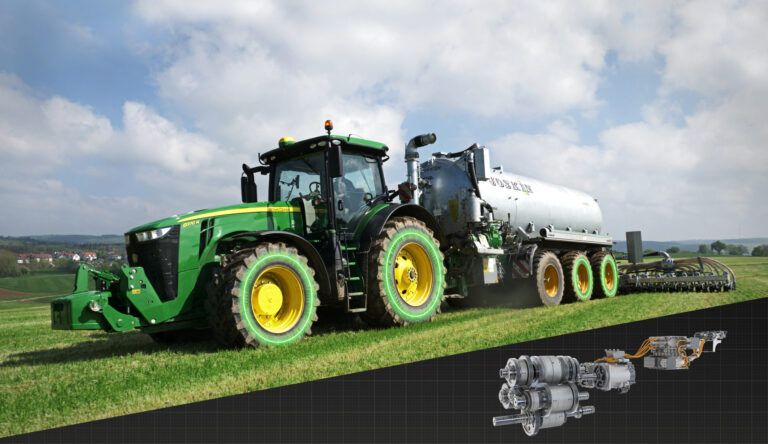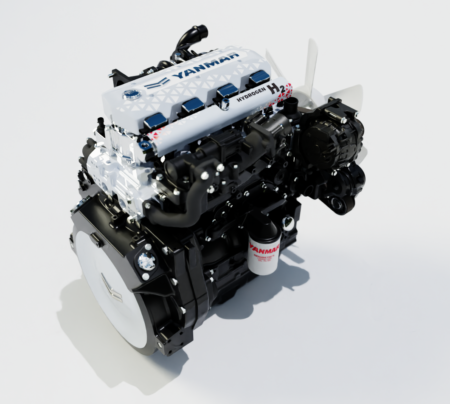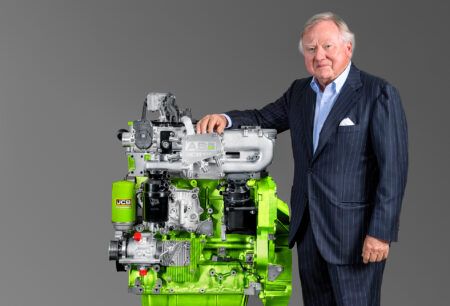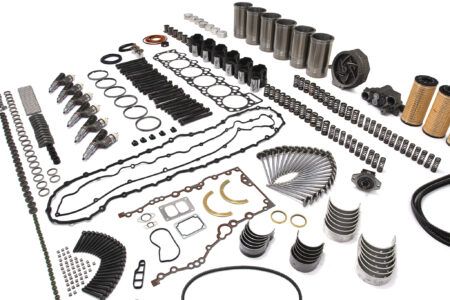John Deere, in cooperation with Joskin, has unveiled the world’s first continuously variable transmission with an electro-mechanical power split, including an implement interface. This completely new concept has been awarded the only gold medal by the Agritechnica Innovation Commission jury.
On the new eAutoPowr transmission, John Deere has completely replaced the hydraulic components with an electric power path. The transmission’s two brushless electric motors are virtually wear-free and powertrain durability is said to exceed that of any other similar concept previously offered by the industry. In addition, maintenance costs are significantly lower.
Another advantage of eAutoPowr is its increased efficiency, especially in the partial load range. As a result, the already industry leading fuel efficiency of 8R Series tractors could be increased even further. Additional operator benefits include very precise speed regulation and better acceleration.
An integrated power management system ensures the transmission of high engine power without overloading the mechanical drivetrain. Clutch wear is permanently monitored and the clutch is automatically calibrated.
For driving implements and trailers eAutoPowr can provide up to 100kW of electrical power, with either 700V direct current (DC) or 480V variable frequency three-phase alternating current (AC) available. This means eAutoPowr is the first transmission to offer a cost-effective and efficient electrification solution for intelligent tractor-implement combinations, by merging power generation and propulsion in one system.
To demonstrate this, John Deere and Joskin have jointly developed a special tractor and slurry tanker combination. The 25.5m3 slurry tanker is equipped with two drive axles powered by a 100kW electric motor, which is operated via a standard AEF ISO socket. The drive axles provide a significant increase in traction and reduction in wheelslip to help avoid soil damage.
This additional drive capacity can also be used for other implements and trailers. The technology allows smaller, lighter tractors to pull wider implements and injectors, for example, which increases productivity while reducing investment costs.





